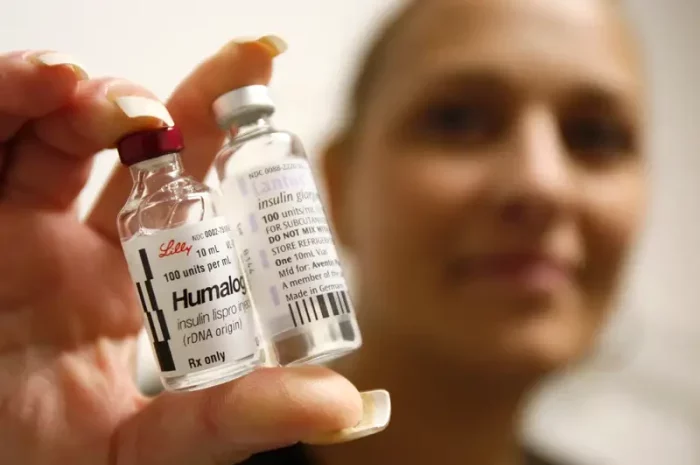Insulin resistance is a condition where the body’s cells become less responsive to insulin, a hormone that regulates blood sugar levels. This reduced sensitivity impairs the body’s ability to effectively use glucose, leading to higher blood sugar levels and an increased risk of type 2 diabetes. Diagnosing insulin resistance early is crucial for preventing or managing diabetes and associated health complications. One of the key tools in this process is the insulin resistance test, which helps determine how effectively the body is using insulin.
Understanding Insulin and Insulin Resistance
What is Insulin?
Insulin is a hormone produced by the pancreas that plays a central role in regulating blood glucose levels. When we eat, carbohydrates are broken down into glucose, which enters the bloodstream. In response, the pancreas releases insulin, which helps transport glucose from the blood into the cells, where it is used for energy or stored for future use.
Mechanism of Insulin Resistance
Insulin resistance occurs when cells in the muscles, fat, and liver do not respond well to insulin and cannot easily take up glucose from the blood. Consequently, the pancreas produces more insulin to help glucose enter cells. Over time, if this compensatory mechanism fails, blood glucose levels rise, leading to prediabetes and type 2 diabetes.
Insulin Resistance Tests
There are several methods to assess insulin resistance, ranging from simple blood tests to more complex and invasive procedures. The most commonly used tests include the fasting insulin level, the Homeostasis Model Assessment of Insulin Resistance (HOMA-IR), the glucose tolerance test (GTT), and the hyperinsulinemic-euglycemic clamp technique.
Fasting Insulin Level
Fasting insulin levels measure the amount of insulin in the blood after an overnight fast. Elevated fasting insulin levels suggest that the body is producing more insulin than normal to maintain normal blood glucose levels, indicating insulin resistance.
Homeostasis Model Assessment of Insulin Resistance (HOMA-IR)
HOMA-IR is a mathematical formula used to estimate insulin resistance. It is calculated using fasting insulin and fasting glucose levels. The formula is:
HOMA-IR=(Fasting Insulin (𝜇𝑈/𝑚𝐿)×Fasting Glucose (𝑚𝑚𝑜𝑙/𝐿)22.5)
Glucose Tolerance Test (GTT)
The GTT measures the body’s response to glucose over a period of time. After fasting, a person drinks a glucose solution, and blood samples are taken at regular intervals to measure glucose and insulin levels. This test helps identify how quickly glucose is cleared from the blood, providing insight into insulin sensitivity.
Hyperinsulinemic-Euglycemic Clamp
The hyperinsulinemic-euglycemic clamp is considered the gold standard for measuring insulin sensitivity. It involves infusing insulin at a constant rate while simultaneously infusing glucose to maintain a stable blood glucose level. The rate of glucose infusion required to maintain euglycemia reflects insulin sensitivity.
Normal Insulin Resistance Test Ranges
Fasting Insulin Levels
Fasting insulin levels can vary depending on the laboratory and population studied. However, a typical normal range is approximately 2-25 µU/mL. Levels above this range may indicate insulin resistance, though it is important to consider individual variations and other clinical factors.
HOMA-IR
A HOMA-IR value of less than 1.0 is generally considered normal, indicating good insulin sensitivity. Values between 1.0 and 2.9 suggest mild insulin resistance, while values above 2.9 indicate significant insulin resistance. Again, these cutoffs can vary slightly based on the population and the specific laboratory standards used.
Glucose Tolerance Test (GTT)
For the GTT, blood glucose levels are measured at fasting, 1 hour, and 2 hours after consuming the glucose solution. Normal ranges are:
- Fasting: Less than 100 mg/dL (5.6 mmol/L)
- 1 hour: Less than 180 mg/dL (10.0 mmol/L)
- 2 hours: Less than 140 mg/dL (7.8 mmol/L)
Elevated glucose levels at these time points may indicate insulin resistance or impaired glucose tolerance.
Hyperinsulinemic-Euglycemic Clamp
In this test, the glucose infusion rate (GIR) is measured. Higher GIR values indicate better insulin sensitivity. Normal ranges for GIR depend on the specific protocol used and individual characteristics, but generally, higher infusion rates (e.g., above 6-7 mg/kg/min) suggest good insulin sensitivity.
Factors Influencing Insulin Resistance and Test Results
Genetic Predisposition
Genetics play a significant role in determining an individual’s susceptibility to insulin resistance. Certain genetic variations can affect insulin receptor function, insulin signaling pathways, and glucose metabolism, influencing test results.
Lifestyle Factors
Diet, physical activity, and body weight are crucial determinants of insulin sensitivity. A diet high in refined carbohydrates and unhealthy fats, sedentary behavior, and obesity are strongly associated with increased insulin resistance.
Hormonal Influences
Hormonal changes, such as those occurring during pregnancy (gestational diabetes) or conditions like polycystic ovary syndrome (PCOS), can affect insulin sensitivity. Hormones like cortisol, growth hormone, and sex hormones also play roles in modulating insulin action.
Medications
Certain medications, including corticosteroids, antipsychotics, and some antihypertensives, can influence insulin sensitivity and alter test results. It is important to consider these factors when interpreting insulin resistance tests.
Clinical Implications of Insulin Resistance
Type 2 Diabetes
Insulin resistance is a major risk factor for type 2 diabetes. When the body can no longer compensate with increased insulin production, blood glucose levels rise, leading to hyperglycemia and the development of diabetes.
Cardiovascular Disease
Insulin resistance is closely linked to cardiovascular risk factors, including hypertension, dyslipidemia (abnormal cholesterol levels), and inflammation. These factors contribute to the development of atherosclerosis and increase the risk of heart attack and stroke.
Metabolic Syndrome
Metabolic syndrome is a cluster of conditions, including insulin resistance, abdominal obesity, high blood pressure, high triglycerides, and low HDL cholesterol. This syndrome significantly increases the risk of cardiovascular disease and type 2 diabetes.
Management and Treatment of Insulin Resistance
Lifestyle Modifications
Diet
Adopting a healthy diet is fundamental in managing insulin resistance. Emphasizing whole foods, such as vegetables, fruits, whole grains, lean proteins, and healthy fats, helps improve insulin sensitivity. Reducing the intake of refined carbohydrates and added sugars is crucial.
Physical Activity
Regular physical activity enhances insulin sensitivity by promoting glucose uptake into muscles and reducing fat stores. Both aerobic exercises (e.g., walking, running) and resistance training (e.g., weightlifting) are beneficial.
Weight Management
Achieving and maintaining a healthy weight is essential for improving insulin sensitivity. Even modest weight loss (5-10% of body weight) can significantly reduce insulin resistance and improve metabolic health.
Medications
Several medications can help manage insulin resistance and associated conditions:
- Metformin: Commonly used to treat type 2 diabetes, metformin improves insulin sensitivity and reduces glucose production by the liver.
- Thiazolidinediones: These medications enhance insulin sensitivity in fat and muscle tissues.
- GLP-1 Receptor Agonists: These drugs increase insulin secretion, reduce appetite, and promote weight loss.
- SGLT2 Inhibitors: These medications lower blood glucose by increasing glucose excretion in the urine.
Monitoring and Follow-Up
Regular monitoring of blood glucose levels, HbA1c (a measure of long-term blood glucose control), and lipid profiles is important for managing insulin resistance and preventing complications. Follow-up with healthcare providers ensures that treatment plans are effective and adjusted as needed.
Advanced Research and Future Directions
Novel Biomarkers
Researchers are investigating new biomarkers to improve the early detection and assessment of insulin resistance. These include adipokines, inflammatory markers, and genetic markers that provide insights into individual susceptibility and disease progression.
Personalized Medicine
Advances in genomics and personalized medicine hold promise for tailoring treatment plans based on an individual’s genetic profile. Understanding genetic variations that influence insulin sensitivity can lead to more effective and targeted therapies.
Gut Microbiome
Emerging research suggests that the gut microbiome plays a role in insulin resistance and metabolic health. Modulating the gut microbiota through diet, probiotics, and other interventions may offer new strategies for managing insulin resistance.
Technology and Digital Health
The use of continuous glucose monitoring (CGM) systems and digital health tools can provide real-time feedback on glucose levels and lifestyle factors. These technologies enable personalized and data-driven approaches to managing insulin resistance.
See also:What Is The Definition Of Insulin Resistance
Conclusion
Insulin resistance is a complex condition with significant implications for metabolic health. Understanding normal insulin resistance test ranges and their interpretation is essential for early diagnosis and effective management. Lifestyle modifications, including diet, physical activity, and weight management, are foundational in improving insulin sensitivity. Medications and advanced research hold promise for enhancing treatment strategies. Regular monitoring and follow-up with healthcare providers ensure that individuals with insulin resistance can achieve optimal health outcomes. As research continues to evolve, personalized and innovative approaches will further improve our ability to diagnose, treat, and prevent insulin resistance and its associated complications.
Related topics:
What’s the Link Between Insulin Resistance and Weight Gain



























